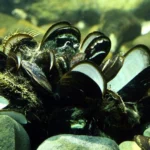
Killer whales, also known as orcas, are one of the most fascinating and intelligent animals in the world. These majestic creatures have a unique appearance and are known for their distinctive black and white coloration. In this article, we will take a closer look at 25 facts about killer whales that will help you understand these animals even better.
1. Killer whales are actually a type of dolphin, not a whale.
2. They are the largest member of the dolphin family, with males reaching lengths of up to 32 feet and weighing up to 11 tons.
3. Killer whales are found in all oceans of the world, from the cold waters of the Arctic to the warm waters of the tropics.
4. They are apex predators, meaning they are at the top of the food chain and have no natural predators.
5. Killer whales have a complex social structure and live in groups called pods.
6.These pods can consist of up to 40 individuals, and each pod has its own unique vocalizations and hunting strategies.
7. Killer whales are highly intelligent and have been observed using tools, such as using sponges to protect their snouts while foraging.
8. They are also known for their impressive hunting skills, working together as a team to catch their prey.
9. Killer whales have a diverse diet, including fish, seals, sea lions, and even other whales.
10. They are known for their signature vocalizations, which include clicks, whistles, and pulsed calls.
11. Killer whales have a unique method of hunting called cooperative hunting, where they work together to herd and capture their prey.
12. They are known to attack and kill great white sharks, a feat that few other animals are capable of.
13. Female killer whales can live up to 90 years, while males have a lifespan of up to 60 years.
14. The gestation period for a killer whale is about 17 months, and calves are typically born in the spring.
15. Killer whales have a strong maternal bond, and mothers will care for their calves for several years.
16. The calves are dependent on their mothers for food and protection, and they will stay with their mothers until they are mature enough to hunt on their own.
17. Killer whales are highly vocal and use a variety of vocalizations to communicate with each other.
18. They also have a unique method of echolocation, using sound waves to locate objects and navigate their environment.
19. Killer whales have a distinctive black and white coloration, with a white belly and a black back and sides.
20. They have a large dorsal fin that can reach up to 6 feet tall in males.
21. Killer whales are social animals and are often seen traveling and hunting in pods.
22. They are known to form strong bonds with other members of their pod, and they will often work together to catch their prey.
23. Killer whales have been observed performing a variety of behaviors, including breaching (jumping out of the water), spyhopping (peeking out of the water), and tail slapping.
24. They are also known for their playful nature and have been observed playing with objects, including seaweed and other debris.
25. Despite their reputation as fierce predators, killer whales are actually quite gentle and are not known to attack humans in the wild.
Frequently Asked Questions about Killer Whales:
Basic Information:
- What is an orca?
- Orcas, or killer whales, are the largest members of the dolphin family. Their scientific name is Orcinus orca.
- Why are they called “killer whales”?
- The name originated from ancient sailors who observed them preying on larger whales.
- Where do killer whales live?
- They are found in all of the world’s oceans, from the Arctic to the Antarctic.
Physical Characteristics:
- How big are killer whales?
- Males are larger than females, reaching up to 30 feet in length and weighing up to 6 tons.
- Why are killer whales black and white?
- Their distinctive coloration, known as countershading, serves as camouflage. It helps them blend in with their environment, making them less visible to prey.
Behavior and Lifestyle:
- What do killer whales eat?
- Their diet varies depending on their location and “ecotype.” Some eat fish (like salmon), while others hunt marine mammals (like seals and other whales).
- How do killer whales sleep?
- They use “unihemispheric sleep,” meaning they sleep with only one half of their brain at a time, allowing them to remain conscious and breathe.
- How intelligent are killer whales?
- They are highly intelligent, with complex social structures and communication skills. They also display learned behaviors that are passed down through generations.
- How long do killer whales live?
- Females can live up to 80 or 90 years, while males typically have a shorter lifespan.
- Orca Social Structure:
- Orcas live in complex social groups called pods, which are typically matrilineal (led by females).
- Orca communication:
- They use a wide range of vocalizations, including clicks, whistles, and pulsed calls, to communicate with each other. Different pods even have their own distinct “dialects.”
- Threats to Orcas:
- Orcas face various threats, including pollution, habitat loss, entanglement in fishing gear, and vessel strikes.









I wanted to reach out and express my heartfelt gratitude for the invaluable content you consistently share on your blog. Your ability to present complex ideas in a relatable and engaging manner is truly commendable. Your blog has broadened my horizons and deepened my understanding of various subjects. Thank you for your unwavering dedication to spreading knowledge.